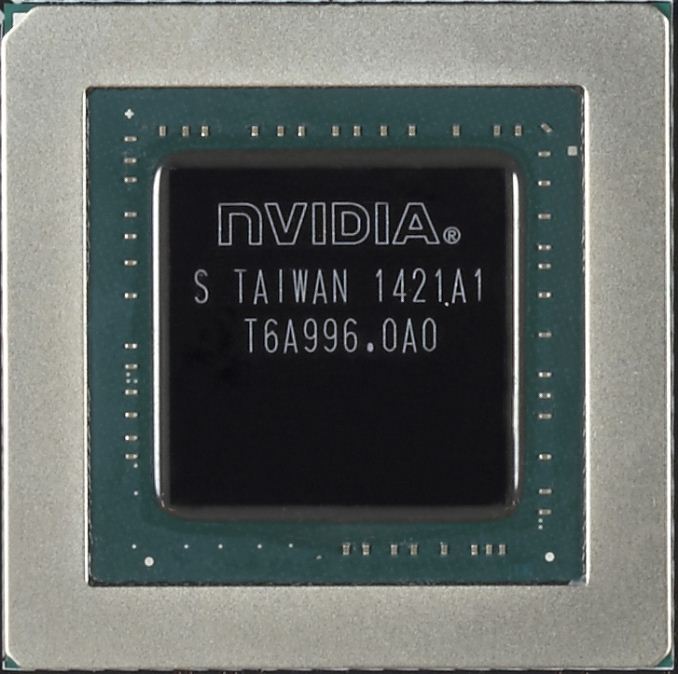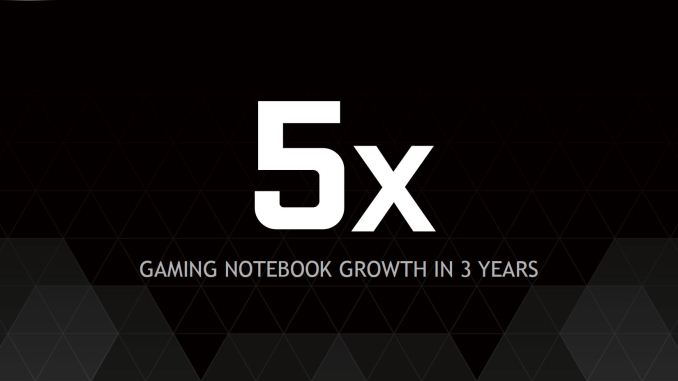NVIDIA GeForce GTX 980M and GTX 970M: Mobile to the Maxwell
by Jarred Walton on October 7, 2014 9:00 AM EST
Every year NVIDIA launches quite a few new products; some are better than others, but they're all interesting. This fall, the big news is Maxwell 2.0, aka GM204. Initially launched last month as the GTX 980 and GTX 970, NVIDIA is hopefully changing the way notebook gamers get treated by launching the mobile version of the GM204 just one month later.
We've already covered all of the new features in the desktop launch, so things like DSR, FXAA, VXGI, DX12, and GameWorks are all part of the notebook launch marketing materials. Of course, as a notebook GPU there are a few extra features available that you don't see on desktop GPUs, mostly because such features aren't really needed. Optimus Technology has been around for several years now so there's not much to add; it allows laptops to dynamically switch between the lower power integrated graphics when you're not doing anything that requires a faster GPU, and it can turn on and utilize the faster discrete NVIDIA GPU when needed. BatteryBoost is a related technology that was first introduced with the GTX 800M series of GPUs, and it seeks to improve gaming battery life. Our test platform at the time didn't really give us the gains we were hoping to see, but NVIDIA assures us that the new GM204 mobile graphics chips will do much better at providing decent battery life while running games. We'll be diving into this in more detail once we get our test notebooks.
Speaking of which, no, we don't have a notebook yet. It was supposed to arrive late last week but ended up shipping Monday instead, which means it should be arriving about the time you're reading this. We'll be posting a separate look at gaming performance as soon as we're able, and we'll have a full review of the MSI GT72 in the coming week as well. For now, what we have are specifications for the mobile versions of GM204 and an overview of what to expect from the mobile versions of NVIDIA's new GPU.
If you've been following the computing industry to any degree over the past few years, a few trends are clearly becoming ever more important. One is that many PC desktop users are migrating to laptops and notebooks, but perhaps just as important is the migration of PC users to smartphones and tablets. There are numerous reasons for the shift – convenience along with increasing performance from handheld devices – but the result is a reduction in the growth of the PC industry. The good news for NVIDIA is that gaming notebooks are still a growing market, though how you define a "gaming notebook" is certainly something that can be manipulated.
NVIDIA's own figures show a 5X growth in gaming notebook sales during the past three years, so clearly there's a demand for getting more graphics performance into laptops. In fact, that's generally the number one desire from notebook gamers: "I want desktop class performance!" NVIDIA is aiming to do just that with the launch of the GTX 980M and GTX 970M.












68 Comments
View All Comments
scottrichardson - Tuesday, October 7, 2014 - link
One can only assume this is the GPU that Apple will slot into their upcoming 'Retina' iMacs, unless the AMD rumours hold true?tviceman - Tuesday, October 7, 2014 - link
It would be crazy of Apple to use Tonga (the rumor) instead of GM204. If Apple really did choose AMD, Nvidia must not have been willing to budge on price.RussianSensation - Tuesday, October 7, 2014 - link
Actually they wouldn't be crazy. There are at least 2 reasons why this rumour could be true:1) Nvidia is filing a lot of patent infringement lawsuits agains Samsung, Qualcomm and even Apple. Rumour has it as a retaliation, Apple will move some of its products to AMD until NV either withdraws the lawsuit or decides to settle at more agreeable terms.
2) NV's GM204 is not cheap and it certainly won't be cheap for the mobile sector. When you are faced with trying to price the iMac 5K without a stratospheric price, you might want to go with a cheaper GPU because that new 5K display will cost an arm and a leg. In other words, since Macs are hardly used for gaming to begin with, you simply balance your priorities to hit appropriate price points your customers will pay based on historical data. It's possible that the inclusion of GM204 would force a new higher end SKU of the iMac when combined with a 5K display.
3) Manufacturing supply. As you can see from the availability of desktop GM204 chips, there are supply issues. Apple might has required NV to provide a certain amount of GM204 chips and Nvidia couldn't guarantee that many in xx time frame.
Now, all of these are rumours and Apple could still use GM204, or GM204 + AMD GPU + Intel GPU in various SKUs of the iMac. However, there are 3 legitimate reasons why Apple would not use Nvidia's GM204 in the next gen iMac.
Doormat - Tuesday, October 7, 2014 - link
4) As shown in the chart on page 2, the max resolution of the Maxwell GPU is 4K. If Apple is going to field a 5K display in the 27" iMac, they will need a GPU that supports this resolution, likely requiring displayport 1.3 (or some draft version of DP 1.3 that was available when the chips and panel were being designed).Morawka - Tuesday, October 7, 2014 - link
The patent deal has nothing to do with apple because apple does not make gpu's.NV's 204 has the best perf per watt by a huge margin. We all know that having the best perf per watt is going to cost more than perf per dollar.
With that said, apple will probably go with AMD for this years models because apple always flip flop's gpu vendors between generations.
However, it will run hotter, use more power. And historicly AMD/ATI GPU's within apple products have seen a much higher rate of recall and defects in the past.
I'm not sure how a mobile amd chip will perform at 5K. The desktop gpu's seem up to the task but we haven't seen a really good mobile amd discrete gpu in a long time.
name99 - Tuesday, October 7, 2014 - link
nVidia has filed lawsuits against Samsung and Qualcomm. NOT Apple.They may have plans to sue Apple --- anyone may have plans to do anything --- but right now they have not sued Apple, have not threatened to sue Apple, have not even hinted or suggested or implied that they want to sue Apple.
Manufacturing supply (if this rumor is true) strikes me as far more likely. There is a long history of Apple doing things that seemed (especially to haters) as perverse limitations based on maximally trying to screw their customers over, only for us to learn later that they were limited by supply issues. When you're shipping Apple volumes, you CAN'T simply wish that millions of the last doodab were available when they can only be manufactured in the hundreds of thousands.
We saw this with fingerprint sensors (restricted to iPhone 5S, not 5C, touch or iPads), probably with sapphire on iPhone 6's, and probably with low power RAM on iPhone 6's (that being what's restricting them to 1GB, not some nefarious Apple plan).
Of course for this rumor to be true and the explanation to be relevant requires that AMD can manufacture faster than nV (or has acquired a large inventory). It's not clear to me that this has to be true...
chizow - Tuesday, October 7, 2014 - link
It's not surprising actually, AMD is probably throwing these chips at Apple for next to nothing, and Apple probably feels at least some obligation to prop up OpenCL, the standard they championed way back when, over using the proprietary CUDA, by using AMD chips that clearly aren't as good as Nvidia would be for their needs (performance and low TDP).Apple's hubris probably leads them to believe they can live without Nvidia and weather the growing pains. My personal experience here at work is that users who rely on Adobe CS have simply shifted to Windows-based workstations with Quadro parts rather than deal with the Mac Pro 2013 GPU/driver issues.
What will really be interesting to see is what Apple does with their MBP, where Kepler was the obvious choice due to efficiency. Maxwell would really shine there, but will Apple be willing to take a big step backwards in performance there just to stay consistent with their AMD trend?
Omoronovo - Tuesday, October 7, 2014 - link
That's certainly possible, but bear in mind that Apple generally doesn't have current top-end mobile hardware in their iMAcs - That either means a late arrival for iMacs or perhaps a 960M when it releases.I doubt AMD will ever get back into Apple's good graces as none of their GPU's have met the power/performance levels nVidia has - bear in mind that price is usually a secondary concern for Apple and their consumers, so those are the only two metrics that really matter here.
WinterCharm - Tuesday, October 7, 2014 - link
Yeah, not to mention that many people were disappointed when Apple included AMD graphics in their Mac Pro. I *need* CUDA. I can't live without it, and many other professionals will tell you the same thing.RussianSensation - Tuesday, October 7, 2014 - link
This is exactly why open standards like OpenCL should be embraced. Saying things like I can't live without "insert a proprietary/locked GPU feature" is what segregates he industry. A lot of programs benefit from OpenCL and AMD GPUs provide full GPU hardware acceleration for the Adobe Suite (Creative, Mercury, Premiere, etc.) and so on:http://www.amd.com/en-us/press-releases/Pages/amd-...
http://helpx.adobe.com/premiere-pro/system-require...
Also, the iMac is not a workstation which means the primary target market of iMacs doesn't perform professional work with CUDA. If you are really in need of professional graphics, you are using FirePro or Quadro in a desktop workstation or getting MacPro.